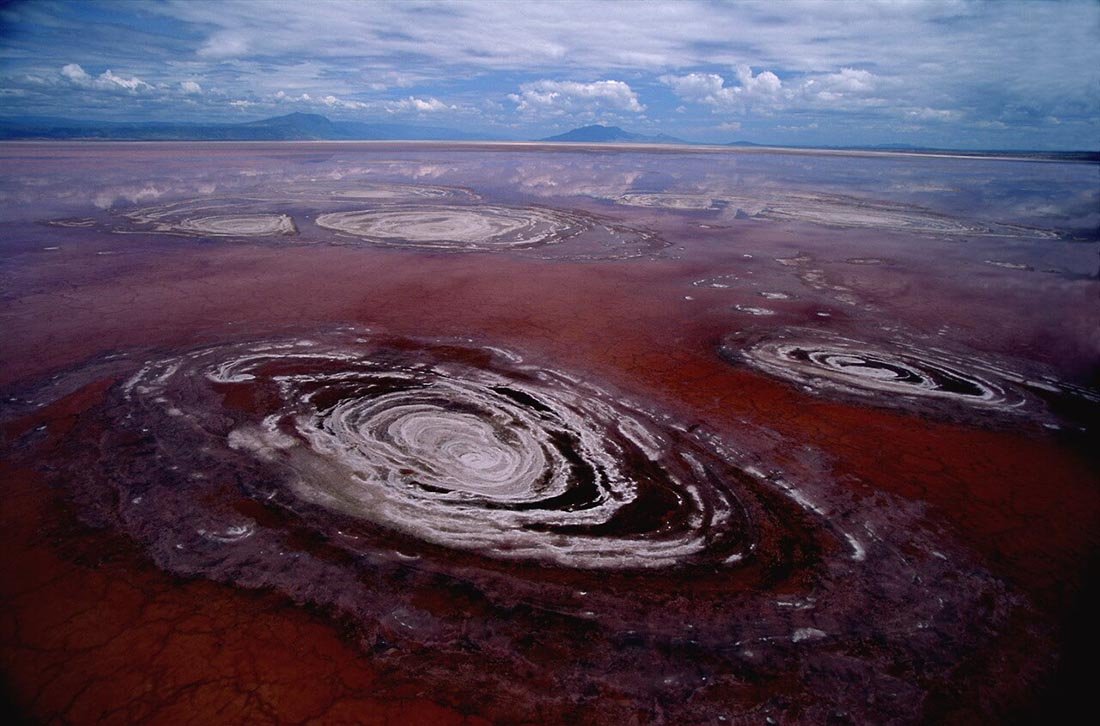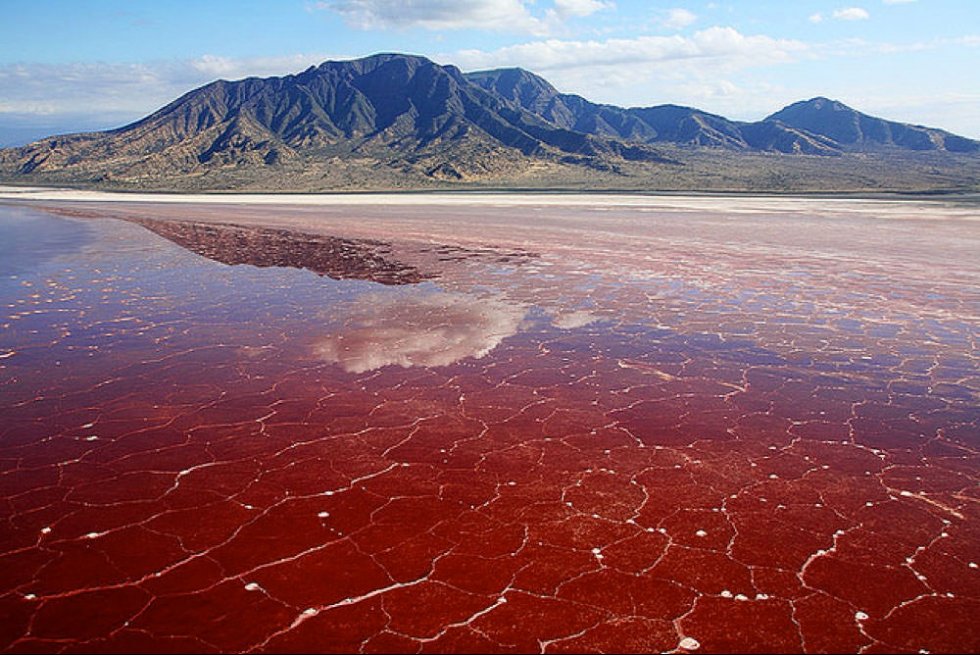
(Image source: brainberries.co)
Welcome my nature lovers! Today's post is a bit morbid, but amazing as always! As you may know, ancient Egyptians used to mummify their dead ones, in order to preserve their bodies as intact as possible for a chance of a better afterlife. Also, in ancient Greek mythology Medusa was a monster that turned to stone whoever looked her in the eyes. What would you think if I told you that a lake in Tanzania does the exact same thing to poor animals that happen to die within it?
The "Mummyfier"
Lake Natron in Northern Tanzania is a quite shallow salt-lake (depth less than 10 feet - 3 meters). The Southern Ewaso Ng'iro River and mineral-rich hot springs of the area "feed" it with water that cannot run out. The only way for water to get away is through evaporation. As temperatures in the area are very high (140.0 °F - 60 °C), evaporation is great, leaving behind a body mass rich in natron (sodium carbonate decahydrate) - that's where the lake got its name from.
The alkalinity of the water is also extremely high (almost 10.5 pH, just like ammonia). That means the water is super caustic. It could burn the skin and eyes of any living creature that's not adapted to such extreme environment conditions.
Let's check some facts about natron:
Natron comes from a mixture of hydrous sodium carbonate ( Na2CO3) and sodium bicarbonate ( NaHCO3 - AKA baking soda). It results from volcanic ash by the nearby Ol Doinyo volcano, which spews alkali-rich natrocarbonatites that end up in the lake when rain washes it away from the volcano slopes. Keep in mind that natron is a natural salt compound and the Egyptians used it widely in their mummification process many years ago.
What happens in the water?
When a creature that's not resistant enough, happens to fall and die in the water it does not decompose entirely. The high concentration of salt causes the carcass to crystallize, leaving behind those creepily calcified "statues of death" that are washed ashore after a while. Well, those poor animals are probably not truly calcified. The lake practically hasn't got that much calcium. They're simply en-coated with sodium carbonate or sodium bicarbonate.

(Image source: discovermagazine.com)
Is the lake a killer?
Although it would make a nice horror film script, the lake is no killer itself. It's probably sick or injured animals that end up in the lake, where they get transformed into such disturbingly-looking figures.
Another possibility is that birds on their migrating journey crash into the lake's surface. The rich-in-chemicals water is highly reflective, tricking the birds into believing they're flying through empty space. The poor creatures don't survive the crash and sink in the toxic water to be washed out as mummies.
Watch this short video about Lake Natron:
Survivors
In this dangerous environment life still thrives. As you can see, the lake has a beautiful red color, this is because of the salt-loving bacteria that start to appear during dry season (when evaporation is extremely high). Those photosynthetic cyanobacteria often color the alkali salt crust of the lake red or pink.

(Image source: placestoseeinyourlifetime.com)
The lake also hosts two fish species of alkaline tilapias, Alcolapia latilabris and Alcolapia ndalalani. It is also the breeding area for lesser flamingos that feed on the cyanobacteria of the lake. They also take advantage of the water toxicity to keep themselves safe from predators, as no other animals come closer to the area.
In July 2001, Tanzania named Lake Natron Basin to the Ramsar List of Wetlands of International Importance owing to its unique biodiversity. The fauna's future is now obscure, though, as the government is considering the development of a soda ash plant to extract the sodium carbonate in order to turn it into washing powder for export.
Death into art
Photographer Nick Brandt visited the area and used the washed away mummified bodies in a spooky BW photoshoot. He picked the dead animals, set them in life-like poses and here is the artistic outcome:


(View image source and full collection in: discovermagazine.com/galleries)
References
wikipedia.org
nationalgeographic.com
newscientist.com
smithsonianmag.com
discovermagazine.com
earthobservatory.nasa.gov
birdlife.org

My fellow Steemians, thank you for reading today's article! I hope you found it interesting enough to follow me, @ruth-girl, for more fascinating phenomena!
If you like weirdness as much as I do, you can check the previous articles of this series:
1 - Volcanic lightning
2 - Bioluminescence
3 - Flammable Methane Ice
4 - Door To Hell
5 - Blue Lava
6 - Everlasting Lightning Storm
Interested in science? Please, don't forget to check the @steemstem project, a community-driven project meant to promote well-written, high-quality, STEM-related content (STEM as for Science, Technology, Engineering and Mathematics).
And for those engaging with education, @steemiteducation is here to join all steemian educators in their common cause of making our job easier, more effective and more fun!
Until our next post,
Steem on, people, and keep smiling!


